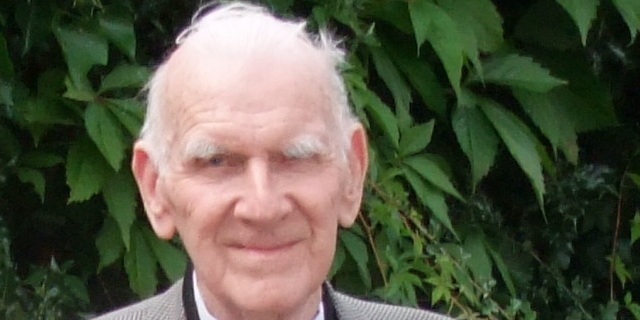One of the victims of the flu outbreak at Orchar Nursing Home in Broughty Ferry was a former British wartime intelligence officer who dealt with Hitler’s deputy Rudolph Hess in Spandau Prison.
Robert Saunders (94) had become frail when he fell ill at the care home and died on Monday.
He moved into the residence in December after it became impossible for him to remain in his own house in Broughty Ferry.
A spokesman for the family said that although Mr Saunders had weakened, he was otherwise well and could have lived for another two or three years.
The spokesman said: ”It is sad that he caught this flu that seems to have entered the home and there was nothing that could be done for him.
”He did like the home and he kept himself as occupied as he could. He was very fluent in Russian and he used to sit and read Russian poetry which kept his mind active.”
In a long and fascinating life, Mr Saunders was born in the year the First World War ended after his parents settled in Dundee from Russia, after fleeing the Bolshevik Revolution.
His father’s family had gone to live in Russia, where Mr Saunders’ grandfather was a flax merchant.
Educated at the High School of Dundee, Mr Saunders was called into the army during the Second World War and served in Persia.
There his command of Russian made him invaluable in communications with the Soviet Union.
After the war he was posted to the British embassy in Moscow and later he was brought back to the Foreign Office in London.Meeting with HessHe was then sent to Berlin where he was an official in the British sector of the German capital, the government of which was divided between the four occupying powers.
It was in this role where Mr Saunders met Rudolph Hess, who had been sentenced at Nuremberg to a lifetime in Spandau Prison.
A controversial figure in the Second World War, the Deputy Fuhrer famously flew to Scotland and crash-landed in Renfrewshire in what was regarded as an attempt to broker a peace deal with Britain.
The attempt failed and Hess was held in prison until he was sent back to a defeated Germany at the end of the war to go on trial at Nuremberg with other Nazi war criminals.
Churchill believed Hess should be regarded as a medical and not a criminal case, but the Soviets refused to allow his release and he never left Spandau, outside Berlin, dying there in 1987 at the age of 93.
The governorship of Spandau was shared by Britain, the United States, France and the Soviet Union, and it was during the British governance that Mr Saunders met Hess.
”It was part of his job,” the family spokesman explained.
”Robert attended meetings about the running of Spandau his fluency in Russian marked him out him for that task as there were many meetings with the Soviets and he regularly saw Hess in his cell.
”Robert took his duties very seriously and would never discuss them.”
Berlin was then split into east and west sections by the notorious wall, and Mr Saunders’ position gave him the opportunity of crossing unhindered into the Soviet zone a privilege denied ordinary Berliners.
